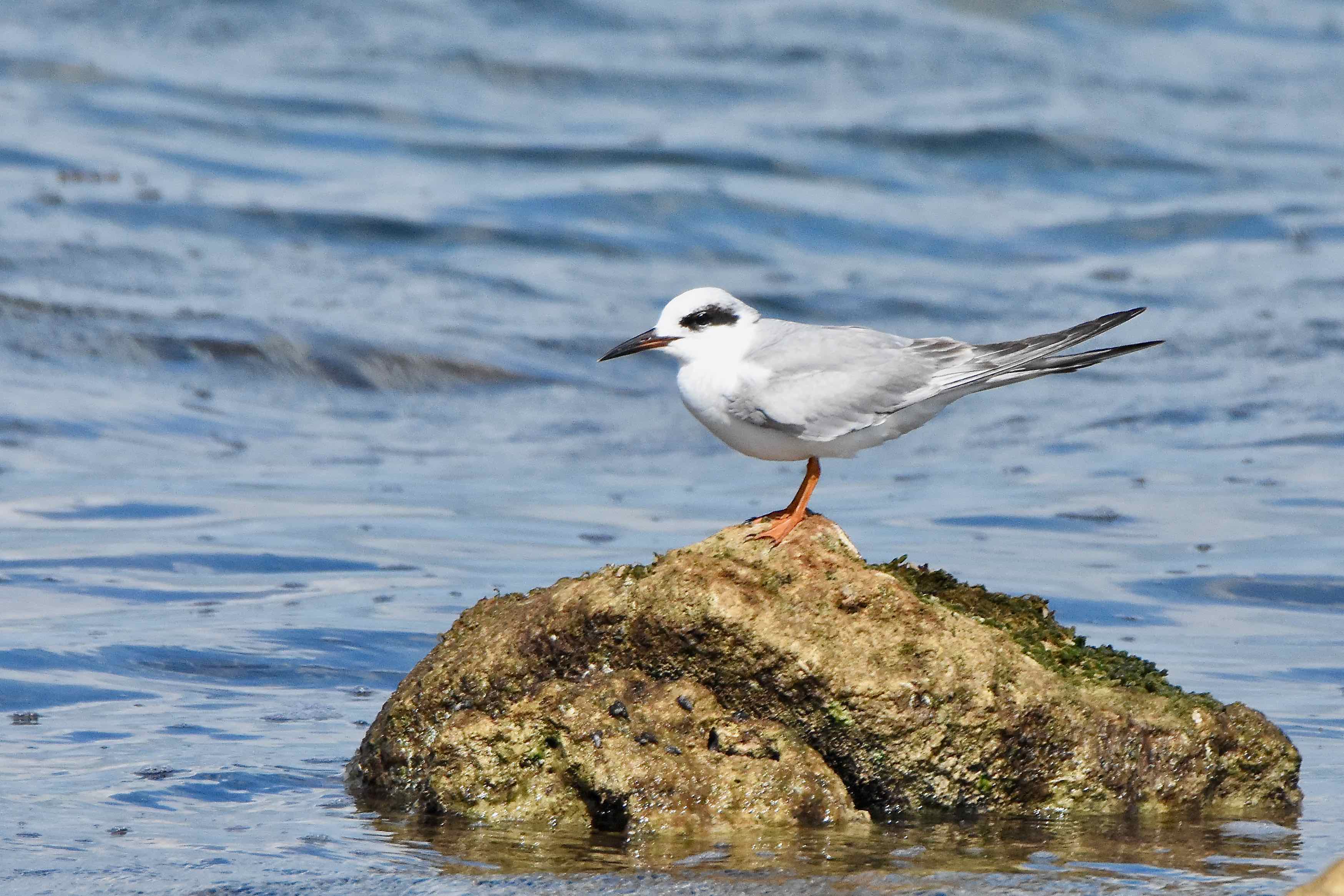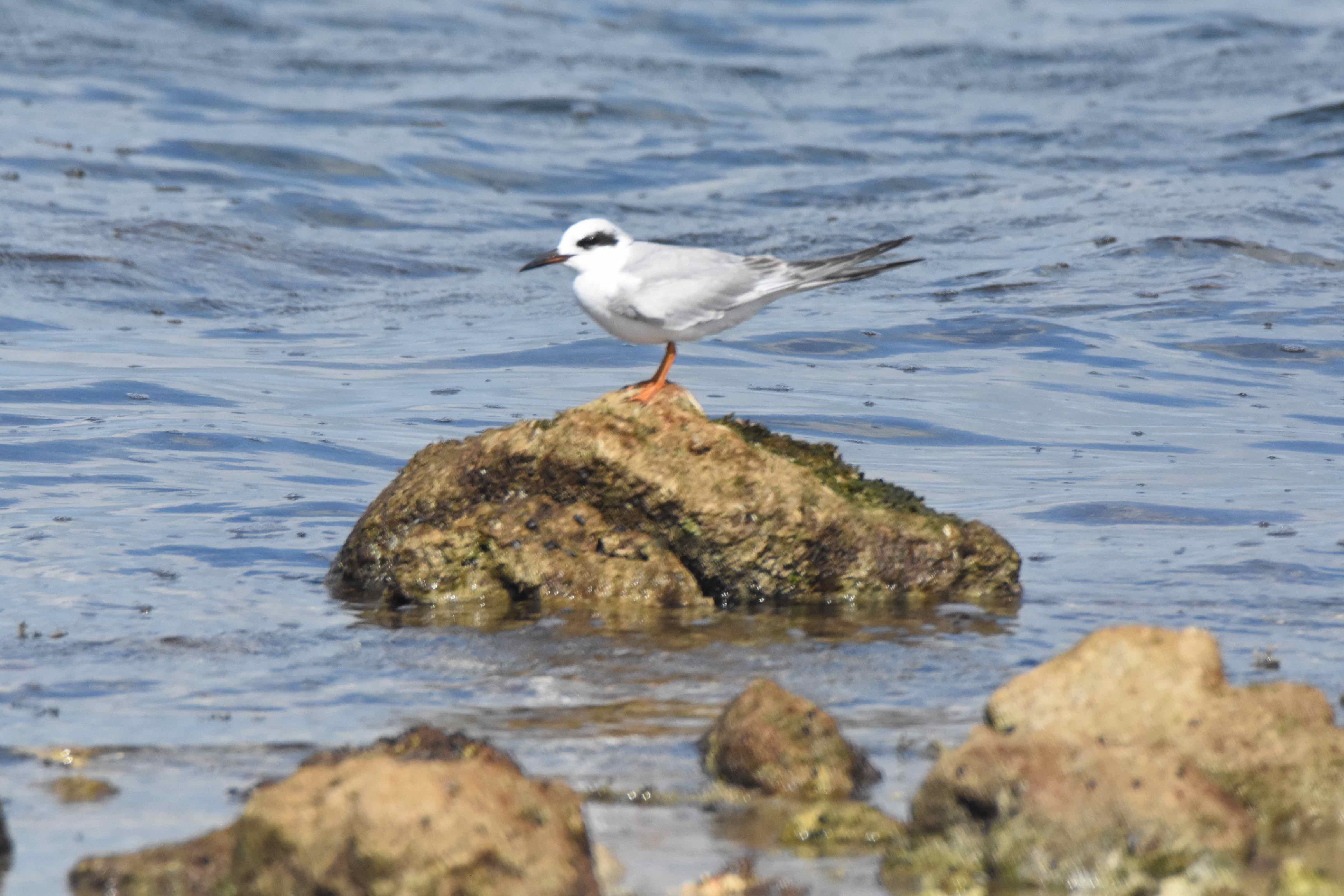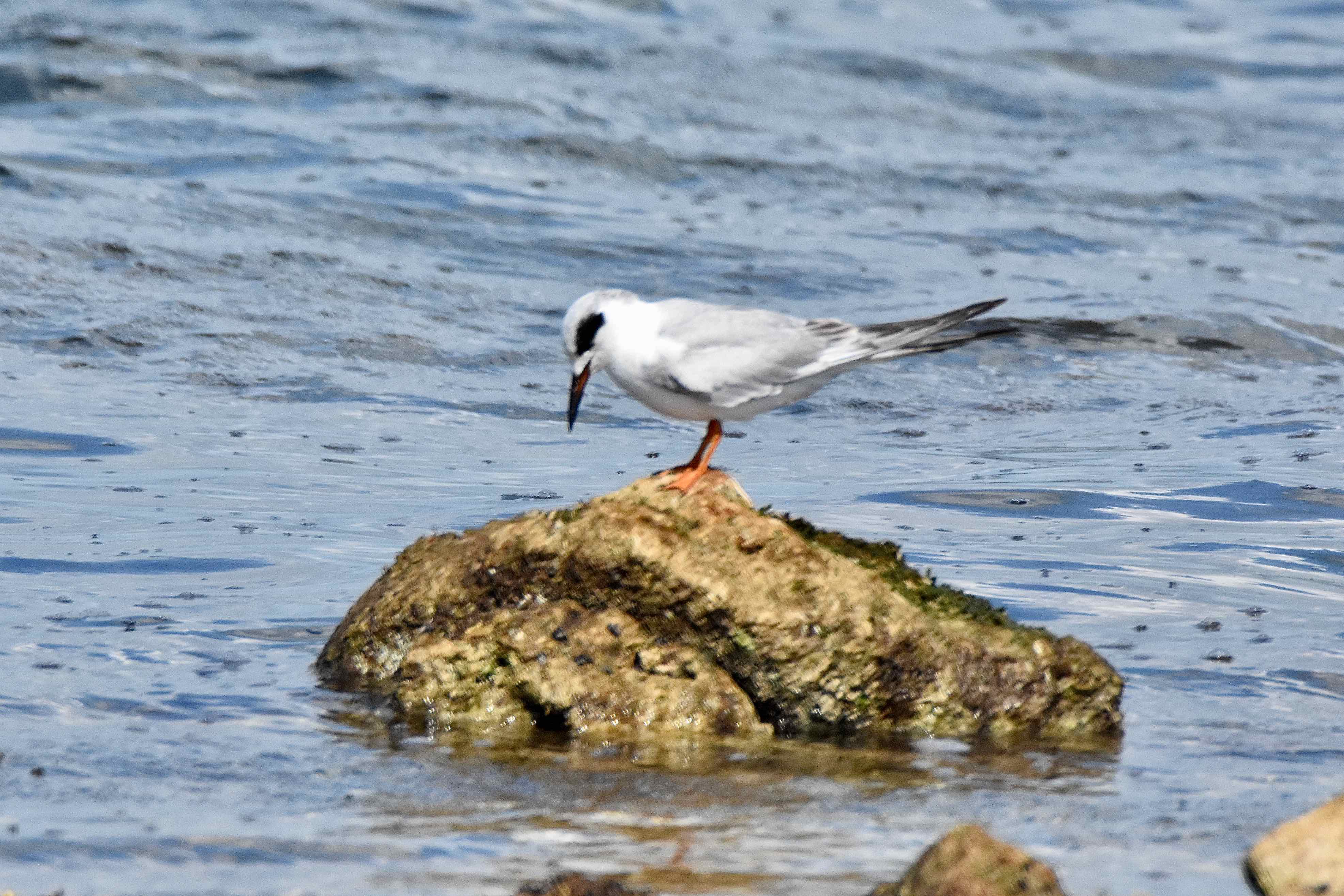
Forster's tern, photographed at Biscayne National Park, Homestead, Miami-Dade County, in February 2017.
Separating Forster's tern from a common tern or an Arctic tern or even a roseate tern requires a sharp eye during the summer nesting season. The differences between the three are small.
But come winter, it's completely different story. And winter is when most likely we'll encounter this bird, scientifically known as Sterna forsteri. Just look for a nearly all white shore bird with a dark bill with a hint of orange at the base, and black bands extending from each eye that don't quite make it to the back of the head. See those and you're looking at a Forster's tern
Forster's terns are fairly common, found in all of Florida during the cooler months. They are the only North American tern that, by and large, spends the entire year within the confines of the continent. Its winter range extends as far south as Mexico and parts of Central America. Few stray farther south. Its summer range is scattered through parts of the Great Lakes, central Canada and parts of the American Rocky Mountains. There's also a year-round population along the coasts of Louisiana and Texas. Their migration routes take them over most of the United States.
In summer, Forster's terns take to marshy lakes, where they'll nest in loose colonies among the reeds and sometimes atop muskrat houses; in winter, they're found on coastal beaches, in estuaries, inlets and lagoons. Their diet is mostly fish and other aquatic delights; they'll hover, pick a target and plunge-dive into the water and grab their meal. At times, they'll scoop items off the surface; they'll also take bugs in mid-air, especially during the summer.
Forster's terns are about 14 inches long with a wingspan of 30 inches. They have a slender bill that's orange at the base and black at the tip during breeding season and a black cap that extends from the bill to the neck. They are light gray above, white below and have a deeply forked tail. That basic description could fit Arctic, common and roseate terns. But as noted above, during the cooler months, the cap recedes to mere bands along the eyes and the bill becomes mostly black. That look only belongs to Forster's — the others retain at least some of their black cap on the back of their heads and neck.
In summer, Forster's terns take to marshy lakes that also feature lots of open water. They build platform nests on top of dense vegetation, on mats of floating vegetation, sometimes on the ground. Both males and females build the nest. Clutches can be one to four eggs, usually three; both parents incubate the eggs, which hatch after 23 to 25 days. Both parents feed their offspring, but not much else is known about their development. Young Forster's will acquire full adult plumage after three years. While the general Forster's population is relatively secure, some states have given the species protected status because of declining habitat.
The name honors Johann Reinhold Forster, an 18th century naturalist and ornithologist who made major contributions to the study of European and North American birds. Forster's terns are members of Laridae, the family of gulls and terns.
Biscayne National Park
Click on photo for larger image



